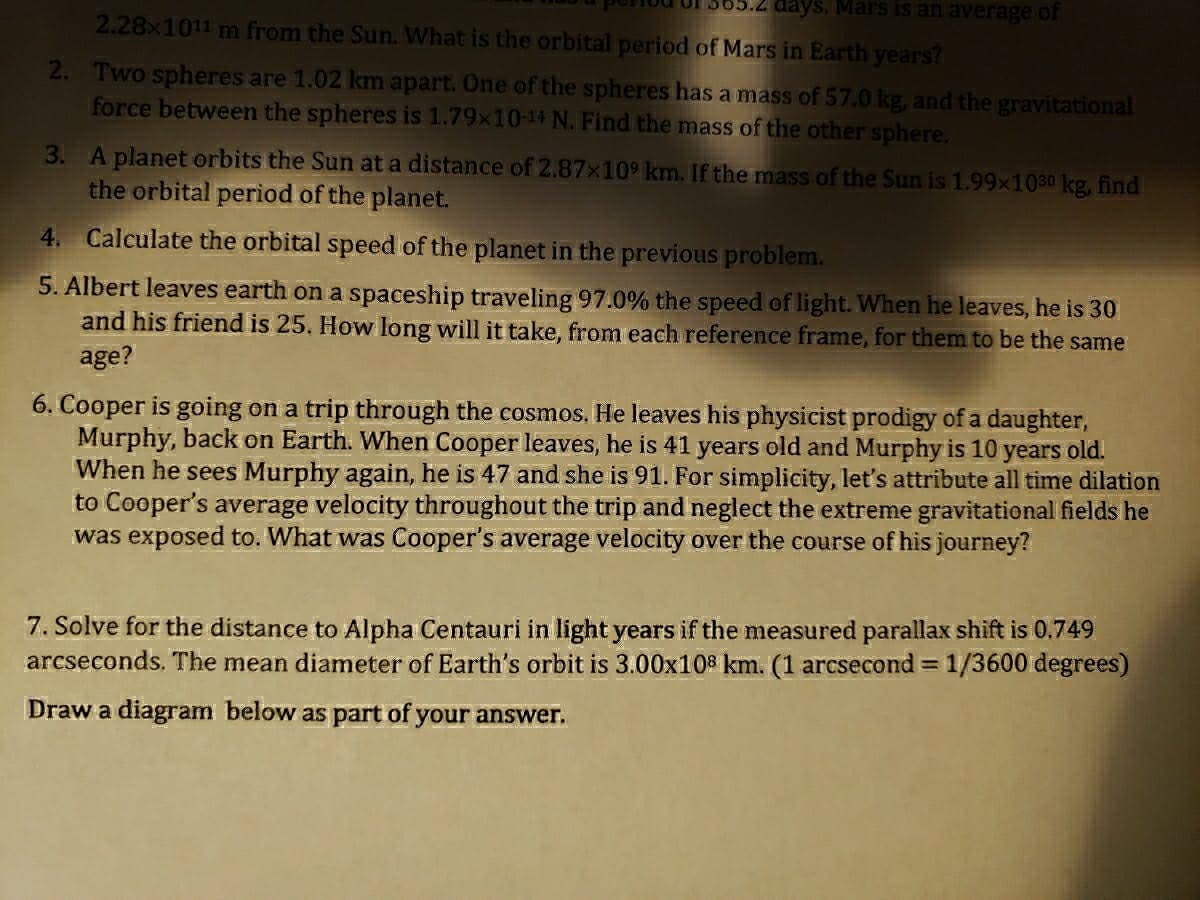6. Cooper is going on a trip through the cosmos. He leaves his physicist prodigy of a daughter, Murphy, back on Earth. When Cooper leaves, he is 41 years old and Murphy is 10 When he sees Murphy again, he is 47 and she is 91. For simplicity, let's attribute all time dilation to Cooper's average velocity throughout the trip and neglect the extreme gravitational fields he was exposed to. What was Cooper's average velocity over the course of his journey? years old.
6. Cooper is going on a trip through the cosmos. He leaves his physicist prodigy of a daughter, Murphy, back on Earth. When Cooper leaves, he is 41 years old and Murphy is 10 When he sees Murphy again, he is 47 and she is 91. For simplicity, let's attribute all time dilation to Cooper's average velocity throughout the trip and neglect the extreme gravitational fields he was exposed to. What was Cooper's average velocity over the course of his journey? years old.
Related questions
Question
Hi there. number six on this worksheet is really puzzling me. Can I get an explanation so I know how to do it in the future?

Transcribed Image Text:days. Mars is an average of
2.28x1011 m from the Sun. What is the orbital period of Mars in Earth years?
2. Two spheres are 1.02 km apart. One of the spheres has a mass of 57.0 kg, and the gravitational
force between the spheres is 1.79x10-14 N. Find the mass of the other sphere.
3. A planet orbits the Sun at a distance of 2.87x10 km. If the mass of the Sun is 1.99x1030 kg, find
the orbital period of the planet.
4. Calculate the orbital speed of the planet in the previous problem.
5. Albert leaves earth on a spaceship traveling 97.0% the speed of light. When he leaves, he is 30
and his friend is 25. How long will it take, from each reference frame, for them to be the same
age?
6. Cooper is going on a trip through the cosmos. He leaves his physicist prodigy of a daughter,
Murphy, back on Earth. When Cooper leaves, he is 41 years old and Murphy is 10 years old.
When he sees Murphy again, he is 47 and she is 91. For simplicity, let's attribute all time dilation
to Cooper's average velocity throughout the trip and neglect the extreme gravitational fields he
was exposed to. What was Cooper's average velocity over the course of his journey?
7. Solve for the distance to Alpha Centauri in light years if the measured parallax shift is 0.749
arcseconds. The mean diameter of Earth's orbit is 3.00x108 km. (1 arcsecond 1/3600 degrees)
Draw a diagram below as part of your answer.
Expert Solution
This question has been solved!
Explore an expertly crafted, step-by-step solution for a thorough understanding of key concepts.
Step by step
Solved in 3 steps
